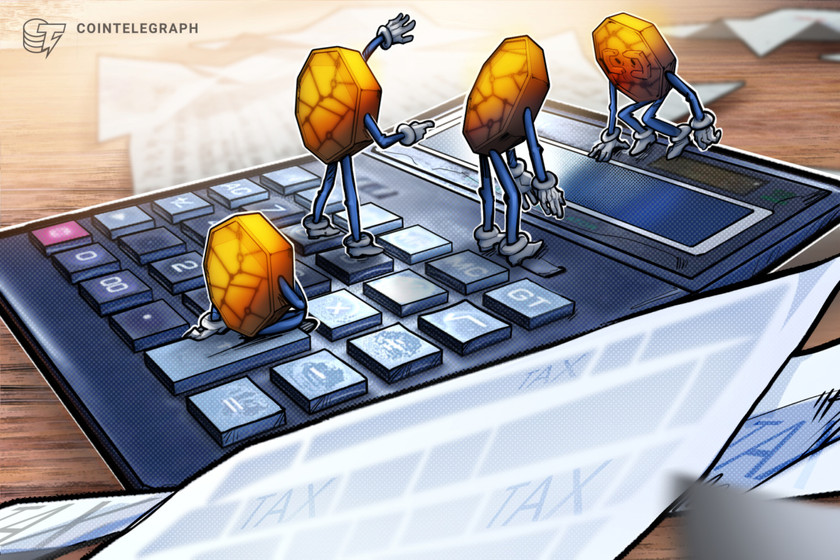Mapping on the Blockchain, Explained
While the current abilities of interactive maps are impressive, they can still be slow, inaccurate, expensive to maintain and also invasive of the user’s privacy.
If you’ve ever taken a road trip or tried to find a business you’ve never been to before then you know how valuable interactive, real-time mapping software can be. Current systems basically use GPS to locate your position on Earth and map it to the interactive database of roads and locations that can then be displayed on your mobile device. The system clearly works pretty well, and has been steadily improving.
That said, there are a few drawbacks. For one, despite being effectively real-time, the speed that the map can track you and load information about your route will be limited by the many moving parts of the network, which can lead to a variable experience. Also, due to limitations on how precise the system can be, it can erroneously place you in the wrong location or on the wrong road, leading to confusion.
Then there’s maintenance costs. The interactive maps are generally generated by teams who take out special vehicles to chart areas and update the data. This is costly and time consuming, as it is an ever ongoing process with updates to road construction and local business changes being a constant. Realistically, this is why only huge companies like Google can offer these services, as they have the capital to uphold the system. Speaking of Google, most users are aware that the current models generally track and store the location data of those using their products, which many see as a direct violation of privacy. Unfortunately, using these helpful products means accepting that a third party could potentially know where you are and have been, at any time.
Now with blockchain technology, it should be possible to address all of these issues and create a fast, reliable global mapping system that also is completely private for end users.
By leveraging the power of decentralized technology, as well as other powerful network protocols, a new type of internet-based map can be created. Having all the data hosted on a blockchain can potentially improve latency significantly, as Dapps can cross reference information from your device along with sensor and blockchain data, meaning less information transmission as well as less processing.
Also, because of the trustless verification systems used in decentralized ledgers, users can have good faith that these apps have accurate, up to date information that essentially cannot be tampered with. Because there is no central authority to process and publish the data, the entire system can move and respond to changing conditions in near real-time.
Lastly, thanks to the cryptographic nature of these networks, user information is kept private. There is no need to reveal your location to a massive corporation who then harvests your data. User’s have full control of what parties or entities can see their info, and the entire system is completely transparent as to what is being shared. This eliminates the burden of location services being an open window into an individual’s life.
While new projects are popping up all the time that tackle these types of issues in new ways, there are already a few major players defining this space. Some of the most popular projects being developed now are FOAM, XYO and Hyperion.
For starters, a project called FOAM is one example of how the issue of a decentralized mapping system could be addressed. In essence, FOAM utilizes the Ethereum blockchain and a service called geohash in order to make network addresses that correspond to real world locations. The system is referred to as Proof of Location (PoL) and involves the use of radio transmitters, called Anchors, to act as nodes for the network. Operators must stake some FOAM tokens in order to participate, however they are also rewarded for successful contributions. These nodes then connect to each other and form “zones,” which basically define an area on the surface of the earth.
Once the basic grid is established, users can then create “Points of Interest” (PoI) which get mapped to the network by being attributed to a specific address on the blockchain. By staking tokens, different users can vote on the validity of a given PoI, with the winning side receiving all staked tokens as a reward, and the losing side losing all. This incentivises honesty, as a PoI like a landmark or coffee shop is either there or it isn’t, hence false claims could be quickly voted out of the network.
The system isn’t perfect, of course. It requires sufficient infrastructure of Anchors to be in place and while there is economic incentive to run one, there is a long way to go to cover the earth. Also since the system runs on Ethereum, it is subject to the limitations of that network’s bandwidth and speed, though these are admittedly set to improve.
Another project looking to create a blockchain powered location service is called XYO. The unique approach here is that users can capture real world location data with special sensors called “Sentinels.” Simply by deploying these sentinels, users can begin earning XYO immediately. When sentinels communicate with each other in “the wild”, by being in close proximity, then further rewards can be earned. This incentivises users to deploy as many sentinels as possible, which of course work to expand the network and the quality of the location data. It should also be noted that any smartphone can also be turned into a sentinel by downloading the project’s app.
There are other ways users can get involved and earn rewards as well, such as by becoming “Archivists” or “Diviners.” These are basically the layers of the network that record information to the blockchain and run queries against that data. With all these parts working together, a constantly evolving, real-time map of the world is being recorded on an immutable ledger. One possible stumbling block could be getting enough Sentinels deployed, as they act as a key cornerstone of the system. That being said, they are fairly inexpensive and again, any mobile device can also be used.
One other project, taking a somewhat different approach to the global mapping on blockchain endeavor, is called Hyperion, which is offering comprehensive location based services thanks to the deployment of their “economic model 2.1.” This model has three layers. The user level layer, an app called “Titan,” provides location information services as well as a wallet for the native HYN token, which users can use to provide their own PoIs to be verified. Beneath this layer is a “Proof of Hybrid” (PoH) system, which is basically a two-tier network that has both a Proof of Work (PoW) layer, called Map3, and a Proof-of-Stake (PoS) layer, called Atlas. Map3 is where location data is stored, verified and distributed; the Atlas layer is where map asset transactions and validation takes place on the blockchain. The system is designed to be censorship-resistant and fault-tolerant.
Users on Titan can stake their HYN tokens to support the Map3 layer, which will earn them passive rewards for participating in the functioning of a node. Furthermore, these tokens can then be re-staked on the Atlas layer, which further aids the network and adds more opportunities for user rewards. Using Atlas’s proof-of-stake consensus mechanism, the top 88 block production nodes will be selected to receive block rewards.
One more reason users may want to get in early is that Hyperion has 9 planned scaling cycles, and in each cycle network nodes will be effectively “split” into two nodes each, which will scale the network horizontally — in both the Map3 and Atlas layers. This will also increase the amount of rewards node operators see in the long term, further incentivising contribution to the decentralized map service.
It also helps that the Hyperion network can be seamlessly integrated into existing map applications, bringing familiar interfaces connected to the highest quality location data. Lastly, the token burning model employed by the network ensures that the supply of HYN tokens will incrementally decrease as the total amount staked on the network and requests to the map service grow. So, based upon supply and demand dynamics, that should drive up the value of the token. This aims to encourage increased adoption of the network due to a naturally deflationary currency acting as the cornerstone.
All of these projects are looking for enthusiastic user support, so if this sounds like an endeavor that could be interesting to you, then there are many ways to participate.
If FOAM is the project you find most intriguing, then you have a couple of ways to get in on it. By heading to their website, you can interact with their map and explore, but you can also begin “Signaling.” This means you lock some FOAM tokens into a smart contract and define a geolocation that needs more services. This will attract users to place new Anchors in the area, as they will receive the signalling FOAM as a reward when they do. Note that to begin signalling you will need a browser wallet, such as MetaMask, with some available FOAM tokens in it. You could also set up your own radio hardware (LPWAN) and stake some FOAM to become an Anchor operator, though of course this is a bit more technical of an endeavor. Nonetheless, information about how to do this can also be found through the official site.
Those with an interest in XYO have currently two different choices for being involved. They can download the COIN app and begin earning XYO through their smartphone as outlined above, receiving even more rewards the more they travel and encounter other users. However, to go to a deeper level, they can begin purchasing external Sentinels and deploying them in the real world. By using something called a “Bridge,” these can then be connected to the main network and further multiply the returns a user sees.
As for Hyperion, there are again multiple ways to participate. One of the more straightforward is to get the Titan app and begin staking HYN for the Map3 layer. If you’re looking to get even more involved, then know that Map3 nodes can be run by anyone simply by following the steps found here. However, to become an active part of the network and receive returns, you will need to stake 200,000 HYNs. Also know that nodes can be run from a personal computer or on external web services, such as AWS.
While these projects are ambitious, there is still a lot to do. It’s too early to say which if any of these projects will be the next adopted standard, but the future does look promising.
Every one of these projects still has a lot in store for the future. All of their websites lay out roadmaps for improved features, expanded reach and how they plan to scale their networks. While this is optimistic, it is fair to say the final word has not been written yet. It is highly likely one or multiple forms of blockchain powered map will eventually become the new standard, but it is unclear which projects will achieve this first or be publicly adopted.
Because of the flaws with current internet maps, there simply has to be a paradigm shift coming. We’ve laid out that there are many innovative ways this is being explored, and of course there’s always a chance a new project will shake things up just around the corner. Whatever happens, it is clear that blockchain is going to play a huge role in the future, not just in how we use our money or our data, but even in how we are able to navigate our world.
Disclaimer. Cointelegraph does not endorse any content or product on this page. While we aim at providing you all important information that we could obtain, readers should do their own research before taking any actions related to the company and carry full responsibility for their decisions, nor this article can be considered as an investment advice.









